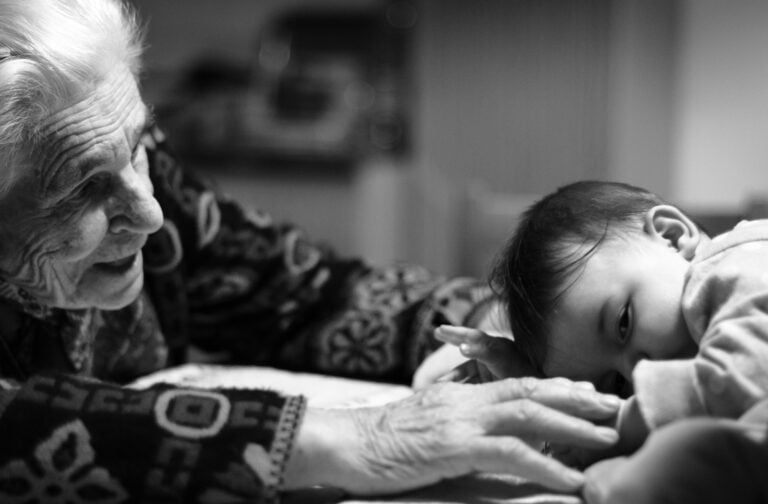Pulmonary tuberculosis (TB) is a bacterial infection that affects the lungs and can be especially challenging for seniors to manage. TB is transmitted through the air and can be spread from person to person through coughing, sneezing, or speaking. In this article, we will discuss ways to manage pulmonary TB in seniors and provide tips for reducing symptoms and improving quality of life.
What is Pulmonary Tuberculosis and What Causes it?
Pulmonary TB is a bacterial infection that affects the lungs and is caused by the bacterium Mycobacterium tuberculosis. When a person with TB infection of the lungs or throat speaks, coughs, or sneezes, TB bacteria are released into the air. If another person inhales these bacteria, they may become infected with TB.
Symptoms of pulmonary TB may include a persistent cough, chest pain, coughing up blood, fever, night sweats, and weight loss. TB can be especially serious for seniors, as they may be more vulnerable to the effects of the infection due to their age.
Risk Factors for Pulmonary Tuberculosis in Seniors
There are several factors that can increase the risk of developing pulmonary TB in seniors, including:
- Previous TB infection: Seniors who have a history of TB infection are at an increased risk of developing active TB disease.
- Weakened immune system: Seniors with a weakened immune system, due to conditions such as HIV/AIDS, cancer, or organ transplantation, are at an increased risk for TB infection.
- Residence in a long-term care facility: Seniors who live in long-term care facilities, such as nursing homes or assisted living facilities, may be at an increased risk for TB due to the close proximity to other residents and the potential for shared respiratory secretions.
Preventing Pulmonary Tuberculosis in Seniors
There are several steps that can be taken to reduce the risk of developing pulmonary TB in seniors:
- Get vaccinated: The TB vaccine, known as the Bacillus Calmette-Guérin (BCG) vaccine, is recommended for seniors who are at an increased risk for TB infection. The vaccine is not usually recommended for healthy adults in the United States due to its low effectiveness, but it may be recommended for seniors who are at a higher risk for TB infection.
- Avoid close contact with people with TB: If a senior is living in a long-term care facility or is in close contact with someone who has TB, it is important to take precautions to minimize the risk of infection. This may include wearing a mask and avoiding close contact with the person with TB.
- Practice good hygiene: Seniors can reduce their risk of TB infection by practicing good hygiene, such as covering their mouth and nose when coughing or sneezing, washing their hands frequently, and avoiding sharing personal items such as towels or utensils.
Managing Pulmonary Tuberculosis Symptoms in Seniors
If a senior has been diagnosed with pulmonary TB, there are several steps that can be taken to manage symptoms and improve quality of life:
- Medications: A healthcare provider will prescribe a combination of medications to treat TB, known as anti-tuberculosis therapy. Seniors with TB will need to take these medications for at least six to nine months to fully eliminate the infection. It is important to take the medications as directed and to complete the full course of treatment to prevent the development of drug-resistant TB.
- Oxygen therapy: Seniors with pulmonary TB may need supplemental oxygen to help increase oxygen levels in the blood. This may involve using a nasal cannula, face mask, or ventilator, depending on the severity of the condition.
- Pulmonary rehabilitation: Pulmonary rehabilitation is a program that can help seniors with TB to improve their breathing, increase their endurance, and manage their symptoms. Pulmonary rehabilitation may include exercises, education, and support to help seniors better manage their condition.
- Palliative care: For seniors with advanced TB or other serious health conditions, palliative care may be recommended to manage symptoms and improve quality of life. Palliative care can include pain management, symptom control, and support for the senior and their family.
Coping with Pulmonary Tuberculosis as a Caregiver
If you are caring for a senior with pulmonary TB, it can be a challenging and overwhelming experience. It is important to take care of your own physical and emotional well-being in order to provide the best possible care for the senior. Here are a few tips for coping with pulmonary TB as a caregiver:
- Seek support: Don’t hesitate to reach out to family, friends, or a support group for help and emotional support. It can be helpful to talk to others who are going through similar experiences.
- Take breaks: It is important to take breaks and take care of yourself, even if it is just for a few minutes at a time. Find activities that help you relax and recharge, such as taking a walk, reading a book, or practicing meditation.
- Learn as much as you can about pulmonary TB: Educating yourself about pulmonary TB can help you to understand the condition and feel more in control of the situation. Talk to the senior’s healthcare provider or a registered respiratory therapist to learn more about the condition and how to manage it.
- Follow infection control guidelines: To prevent the spread of TB to others, it is important to follow infection control guidelines as recommended by the healthcare team. This may include wearing a mask, washing hands frequently, and avoiding close contact with others.
Conclusion
Pulmonary TB can be a serious and challenging condition for seniors to manage. By working with a healthcare team to manage symptoms, taking steps to prevent TB infection, and caring for their own well-being, caregivers can help seniors to maintain their health and quality of life.
References: - Centers for Disease Control and Prevention. (2021). Tuberculosis (TB). Retrieved from https://www.cdc.gov/tb/topic/basics/default.htm
- World Health Organization. (2020). Tuberculosis. Retrieved from https://www.who.int/news-room/fact-sheets/detail/tuberculosis




























